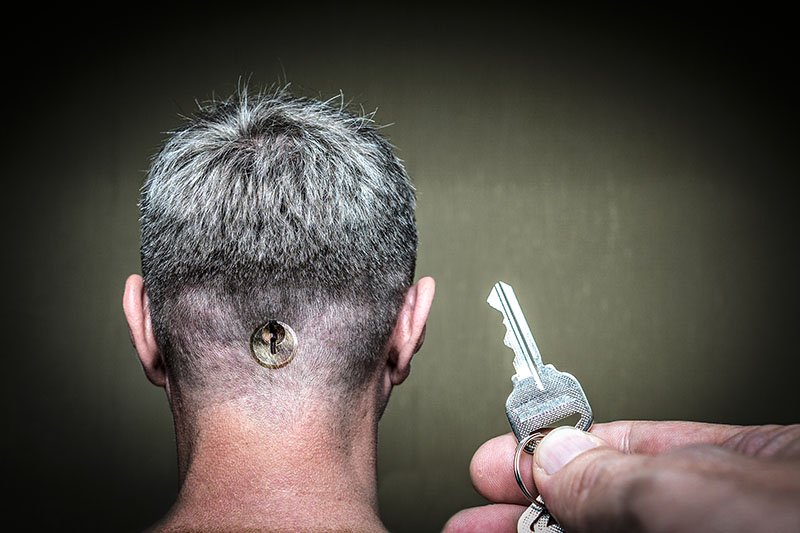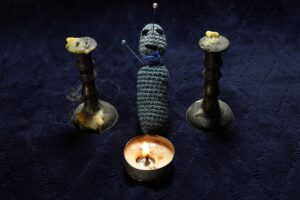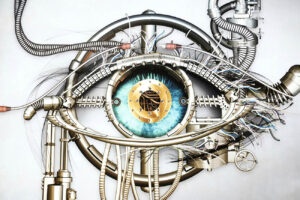Sometimes a song or a scent makes you experience a certain kind of emotion. Perhaps you feel the nostalgia of that best summer of your teenage years. Or, maybe you experience how it felt to fall in love with your companion. We get conditioned to react to different triggers all the time. Sometimes the feelings are good - sometimes they are not so good, and they can even cause anxiety or panic attacks. But what if you could create positive associations intentionally? Imagine if you could trigger the feeling of happiness when you want. That you could capture that exact feeling of euphoria of a special moment. Well. With the anchoring technique, you can.
What is emotional anchoring?
An Anchor is a trigger or stimulus that causes you to feel a certain emotional state, and emotional anchoring is a technique where this anchor is created. Emotinal anchoring is often used in hypnosis, NLP, and mentalist tricks. I first got to know the technique from Henrik Fexeus’ book, “The Art of Reading Minds”. The anchor itself is usually a neutral stimulus, such as a song or a notification sound, and the reaction to it is an emotion that has been associated with the stimulus. If you remember Pavlov’s dogs, the famous example of the Classical Conditioning, it’s pretty much the same thing. You condition yourself to experience an emotion when you hear, see, or feel something. Anchors are conditioning triggers.
Anchors are everywhere
We collect numerous anchors during our lifetime. Some of them are neutral, some of them are positive, some of them can cause us troubles such as dissociating or panicking. The stronger the feeling, the more likely it is that an anchor will be born if a potential such is introduced while experiencing the feeling. Understanding anchors helps us to understand our inner selves and our reactions to our surroundings. For example, let’s say you meet someone for the first time. You don’t know anything about the person, yet, something about the person makes you hate them. After a little bit of soul searching, you may figure out that the person has something similar to someone who once hurt you. Such as an expression, a word that they use repeatedly, a scent, hair-style, or even just a piece of clothing.
- You taste some home-made pancakes – You experience a sudden nostalgia and happiness. You may not even realize it, but this feeling is from summer 1995 when you ate pancakes with your friend and had a midsummer pyjama party at your family’s cabin. You were carefree and happy!
- You see a person wearing a green flower dress – You feel safe and warm because your mother used to wear a similar dress.
- You hear a notification – You feel the urge to pick up your phone.
- You smell a certain perfume in the street – You get a bit horny because your crush wears the same perfume.
- You see people dabbing – You feel the need to join them because you and your friends always do dabbing when you party.
- You clap your hands after a show – Even if the show was not that good, you feel intensive admiration and cathartic hype, because you usually give applause when you cheer for a good show. Here we can also see a chain: Other people clapping makes you clap, and when you clap, you experience an emotion.
When you do anchoring for your emotions, you cause these associations to be born intentionally. Basically, you can create any desired emotion as long as you have enough time to capture the feeling to be anchored.
Why does it work?
We have the tendency to create links between what happens inside our mind with what happens in our surroundings. We process life by connecting emotions with pictures, sounds, and feelings. By doing this, our mind creates memories and long-term memory can be created through an emotional charge associated with it. When you do emotion anchoring, you make this intentional and you have the possibility to reinforce the phenomenon so that the effect becomes stronger.
What can I do with emotional anchoring?
You can do various things, depending on the captured emotion. You could, for example:
- Calm yourself down in the moment of panic
- Silence your mind when you feel chaotic
- Restore your confidence, when feeling down
What can be used as an emotional anchor?
- Tap a surface with your finger.
- Pinch your ear.
- Touch the tip of your nose.
- Make a certain movement with your tongue.
- Close your fist and tense its muscles three times.
These are only some examples. And naturally, each emotion needs a different anchor.
Can anchoring cause also bad feelings?
Most people love it when they are being petted. Judging by how many try to do it in bedroom, this certain movement of a thumb where the tip of the finger is gently moved on skin, is generally seen as something comfortable, loving and nice. Not for me. In my past, I had a bad experience that led into a traumatic event. This event was preceded by a repetitive petting with a thumb, even after several “Don’t do that”s. We are talking about a situation that took hours, and there was plenty of time to repeat the movement so many times, that a really stubborn anchor was created. Even today, being petted with one’s thumb causes a sensation of anxiety that will escalate very quickly into dissociation if the action isn’t stopped.
Another example is if a child is only hugged when feeling bad, but never just for the sake of showing affection and love, there is a big risk of hugs becoming a negative anchor. The person starts to feel unexplained anxiety. We may try to seek for explanations to fill the gaps or just simply say “I just don’t like it.” But, usually, we have learned the negative emotion being connected to a certain happening. Often there is more behind the anxiety than just “I just don’t like it”.
Especially in Finnish culture, we rarely touch each other. Hugs are often given when we meet, say goodbye, of comfort each other. Still, we tend to touch others mostly when something is wrong. I’d say Finns tend to be more anxious about positive touch than people in many other countries. I wonder if things would be different, if we started to touch other people more during the positive moments…? This is a powerful thought. By anchoring someone else having positive thoughts with your touch, you can do a lot of good to your beloved-ones. If you have that magical button to make someone feel good, you can use it when that person some day feels bad.
Naturally, one can also use emotional anchoring for an interesting self-training, for example when trying to get rid of smoking. By making smoking an anchor that causes bad feelings, getting rid of it might become easier. However, this is a different topic that we will not dive deeper into. You can imagine how many risks there are. For example eating disorders and feeling bad about food could be caused by emotional anchoring. This is NOT what you should do. Be smart. If you decide to try to use negative anchors, the responsibility is purely yours.

How often can I use the anchor?
I recommend to not overuse your anchor. Use it when you feel that you need it and if possible, reinforce it whenever you feel something similar. The reason why you should not use the anchor carelessly is because every time you use it in the middle of another emotion, you may also bring a tiny bit of that unwanted emotion as part of your anchor. This dims it down or might change it.
Your anchor might change, dilute or get unintentionally modified
Sometimes life introduces us situations that may change the emotion that the anchor causes.
In 2010, I created my first strong anchor and fell in love with the technique. I had lost my pet birds because of a false pneumoconiosis diagnosis. And when the mistake was revealed and I finally had the permission from the doctors to get my birds back, I felt such massive joy, crying tears of happiness, that I decided to capture this feeling. The gesture that I used was squeezing my fist tight while lifting it in the air at the level of my shoulder while thinking “Wryy tulee kotiin!” (“Wryy comes home!”) Wryy was my beautiful, beloved cockatiel.
This anchor carried me for years. I used it sparingly, maybe 4 times per year, when I really needed it. Unfortunately, some years ago Wryy died. The situation was quite horrible and traumatizing and without going too much into detail, all I can say is that I no longer was able to use the anchor. While writing this article, I tried that anchor for the first time in years. It still works. However, it forces me to also experience the sadness of losing my bird.
How to create an emotional anchor? Step by step.
- Decide the mind state or an emotion that you wish to trigger quickly when needed.
- Analyze what causes this emotion for you.
- Decide your anchor.
- Wait patiently. Move on with your life, or, try to trigger the feeling somehow. For example, if you are looking for the calm that you feel in nature, go to nature to experience the feeling.
- When you access the emotion that you want to anchor, stop. Sink in to the emotion and let it take you on a journey. A Chrysalid can combine the emotion boosting techniques here to maximize the feeling. The stronger the emotion is, the better.
- Carry out your anchor when the feeling is in its highest state.
- Repeat your anchor, if it’s possible, but no need to rush. Do what feels natural at the moment.
- Stop when the emotion before it gets diluted. You don’t want to anchor a fugitive emotion.
- If you experience the same emotion later, you can strengthen your anchor by repeating it.







1 Comment
I’ve done this, I’m just not aware of doing this. I use some songs when i wanna feel better or euforic. Thank you for this knowledge now it is upgrade much better❤️❤️❤️